In the decades following the Civil War, Alabama became one of the leading iron and steel producers. Although Gadsden and the Florence Sheffield District along the Tennessee River contributed to the rise, the Birmingham District became the largest iron and steel producer in the southern United States, earning it the nickname “The Pittsburgh of the South”. The unique geological conditions provided the Birmingham District with closely associated and abundant deposits of iron ore, coal, limestone, and dolomite. These were the raw materials essential for making iron and steel, and at some locations within the district, deposits were only a few miles apart. As luck would have it, this geological arrangement resulted in the lowest raw material assembly costs in the United States. The result was rapid growth in the last two decades of the 19th century, on par with Pittsburgh and Chicago.
The Republic Steel & Iron Company was a consolidated industrial company incorporated under the laws of New Jersey on May 3, 1899.
Headquartered in Chicago, their operations stretched all across the eastern United States with a capital stock of $55 million. William Hassinger, based in Birmingham, served as vice president and southern manager for the company. Their major holding in the Birmingham District included the Pioneer Mining and Manufacturing Company: which operated the Pioneer Furnaces at Thomas, along with numerous mines on 26,000 acres of coal beds, coke ovens, and the Thomas & Sayreton Railroad. The company also took over Hassinger’s Alabama Works rolling mill at Gate City and briefly held interests in the Bessemer Steel Plant, Bessemer Steel Rail Mill, Birmingham Open Hearth Steel Plant, and Birmingham Rolling Mill Works. John Henry Adams was the manager of district operations.
In 1886, David Thomas, with his son and Robert Sayre, purchased the 2,000-acre Williamson Hawkins Plantation on Village Creek southwest of Birmingham for about $4 per acre. In addition to water access, the property included limestone, ore, and coal deposits and was therefore considered ideal for iron-making. He built a massive complex of iron furnaces known as the Thomas Furnaces. The first Thomas Furnace, 75 feet tall with a 17-foot hearth, was blown in on May 15, 1888. His grandson Edwin was in charge of operations. Republic Steel purchased coke from the Cahaba Coal Company until it completed a battery of beehive coke ovens at its mines in Sayreton. It soon began supplementing its supplies with coal from the nearby Pratt mines. A second furnace, built as a twin, was blown in on February 22, 1890. In 1898, Republic Iron & Steel Company purchased an option on Pioneer Company’s capital stock and exercised it the following year, acquiring the Thomas Furnaces complex. The Thomas Furnace plant became the largest in the Birmingham District in 1902 when Republic Steel added a third blast furnace.
Additionally, growth was spurred by the ability to attract a large labor force of freedmen and poor whites. Impoverish and unemployed after the war, many laborers willingly migrated to Birmingham in search of industrial jobs, which were a more attractive alternative to tenant farming and sharecropping. This workforce contrasted starkly with northern industrial centers, which largely employed an immigrant labor force. Southern workers carried over traditional racial attitudes and social structures from antebellum days. Transplanted into a new industry, these cultural values led to segregated workplaces that facilitated the owner’s control of wages, working conditions, and union organizing. Another factor that allowed Alabama iron manufacturers to dominate labor relations was the convict-lease system that leased state and county prison inmates for work in their industrial operations. From shortly after the Civil War until 1928, the convict-lease system provided a substantial number of workers in the company-owned coal mines. Young black men from rural agricultural areas provided the overwhelming majority of this coerced labor force. Possessing no mining experience, these workers died in numbers that far exceeded the mortality rates of the American coal mining industry. As a result of the political clout held by industrial leaders, Alabama was the last state in the nation to outlaw convict leasing.

At the beginning of the 20th century, there was a large-scale consolidation within the American iron and steel industry. In Alabama, Republic Steel purchased Thomas and U.S. Steel acquired TCI. From that point onward, most of the pig iron produced at the Thomas Works was shipped to Republic’s Gadsden mill. Over the next seven decades, Birmingham furnaces produced millions of tons of pig iron, half of which was dedicated to steel production, and half were sold as foundry iron. By the early 20th century, all of the nation’s large cast-iron producers had moved substantial portions of their operations to the Birmingham District.
In 1902, Republic expanded the Thomas Furnaces with a third blast furnace, 90-feet by 18-feet in size. Not only was Furnace No. 3 the largest in the entire district, but it was capable of producing 250 tons per day. The next year, Furnace No. 2 was expanded to the same size. Furnace No. 1 was also expanded, but to 85-feet by 20-feet. The Thomas Furnaces thrived and by the 1920s, Birmingham produced one-fourth of the nation’s foundry iron and had grown into the largest steelmaker in the Southeast. Republic Steel replaced the coke battery with Koppers-Becker ovens in 1925. The Cleveland, Ohio-based Republic Steel Corporation acquired all of the Republic Steel & Iron Company’s Alabama properties in 1930 and used the iron furnaces to supply steel to its steel plant at Alabama City. In 1939, the No. 3 furnace was removed and the other two were rebuilt with 16-foot hearths and 83 and 84-foot stacks.

The workmen settled into a company village, which came to be known as Thomas. The company town of Thomas would later become one of Birmingham’s 99 neighborhoods. The first worker homes built in Thomas by the Pioneer Corporation were modeled after those in factory towns in Pennsylvania. After the purchase by Republic Steel, more typical house plans were adopted, including the shotgun, square-top, and bungalow-style houses. Those living outside the company-controlled village settled nearby in East Thomas, an unplanned extension of Thomas, housing mostly African American workers at the Thomas Furnaces and the nearby East Thomas Railroad Yard. Plant superintendents and supervisors lived at the top of the townsite, north of 1st Street on “Silk Stocking Row.” Successive streets, dubbed “Cotton Stocking Row” and “Bare Legged Row” as they sloped down toward the furnaces, housed skilled workers (mostly white) and unskilled workers (including Italian immigrants). The houses closest to the furnace were occupied by black laborers and their families. Within the town proper, which had a population of around 550 households in 1912, company workers kept the streets cleared and planted crape myrtles and calla lilies. As operations grew, more workers settled into East Thomas. The residential district known as Thomas was subdivided and redeveloped in the 1950s.
Robin Wade, Sr. founded the R.A. Wade Company in 1932 and operates the stone quarry in and around Republic Steel’s Thomas plant. In the latter half of the 20th century, Birmingham’s iron and steel industry began a decline that continues today. Republic Steel remained prosperous until the 1970s, when increasingly stringent air-quality requirements, foreign competition, and the rise of ductile iron made from scrap forced the shutdown of foundry iron furnaces and their coal and ore mines. The Thomas Furnaces breathed their last breath in 1971. The property was later purchased by Wade Sand & Gravel. The Wade family began offering the grounds to artists in the 1990s who needed studio space. Under the supportive stewardship of Robin and Carolyn Wade, the abandoned Republic Steel mill has become a haven for creatives and artists inspired by Birmingham’s unique history to create a better future.
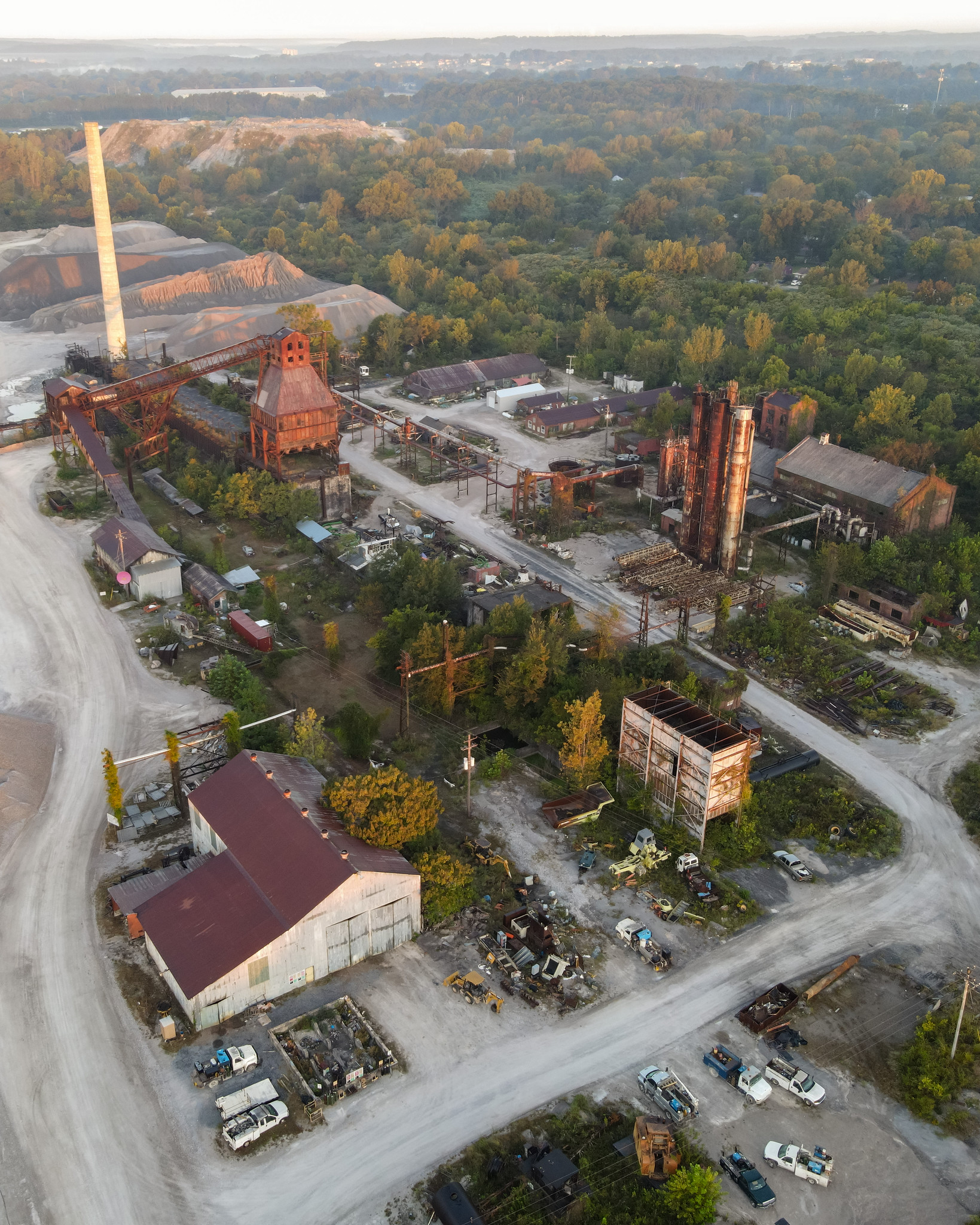










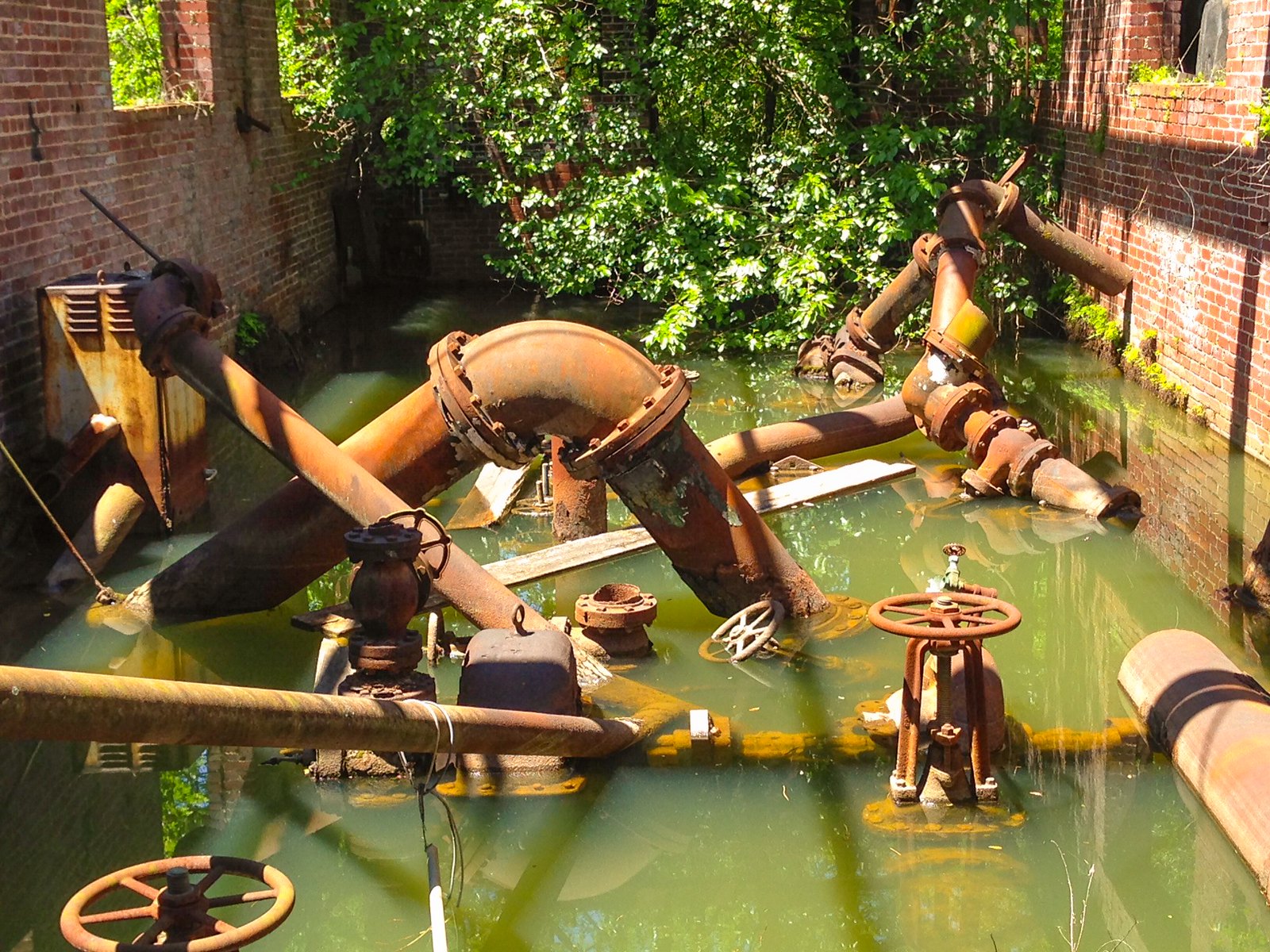






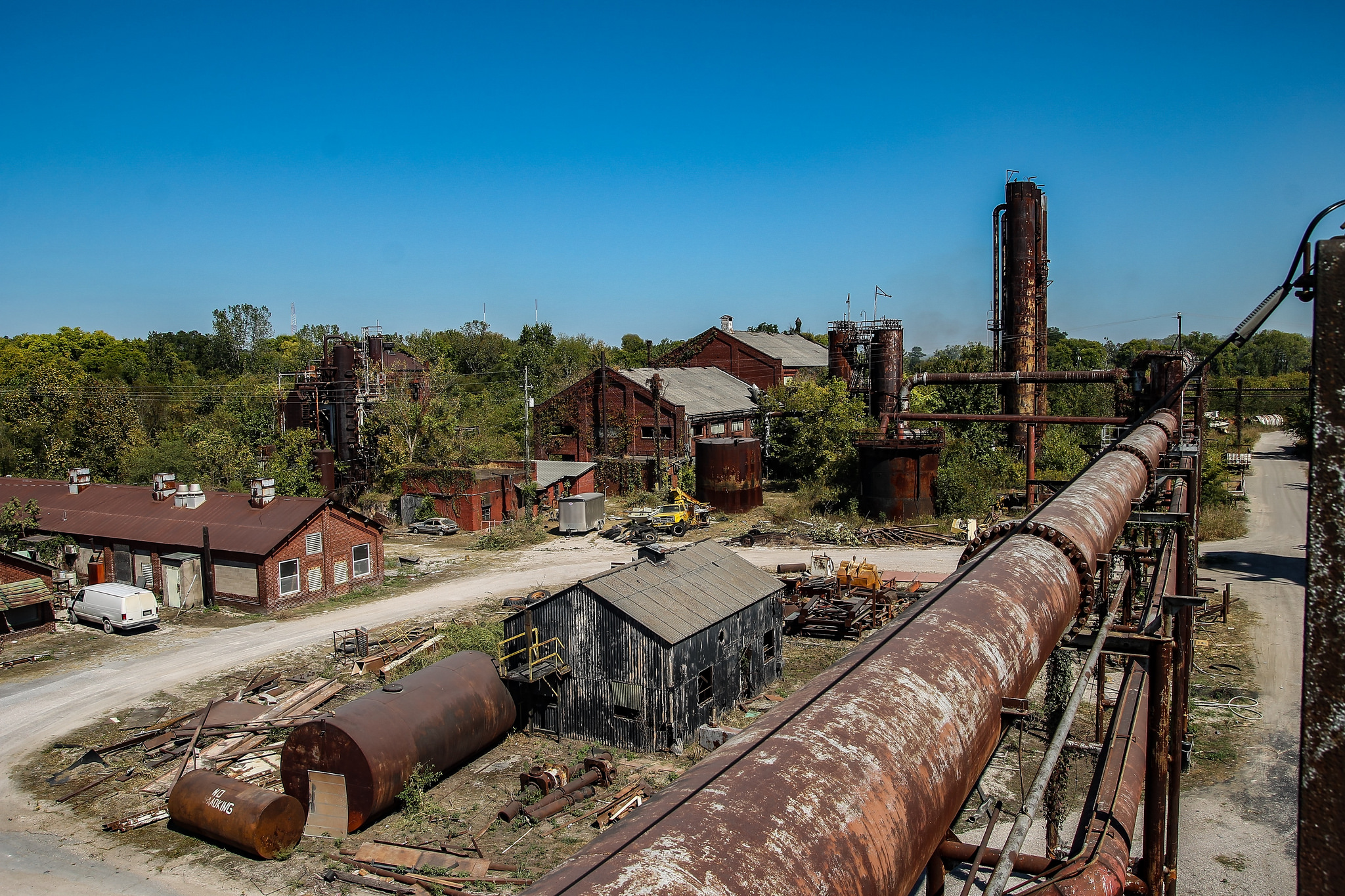
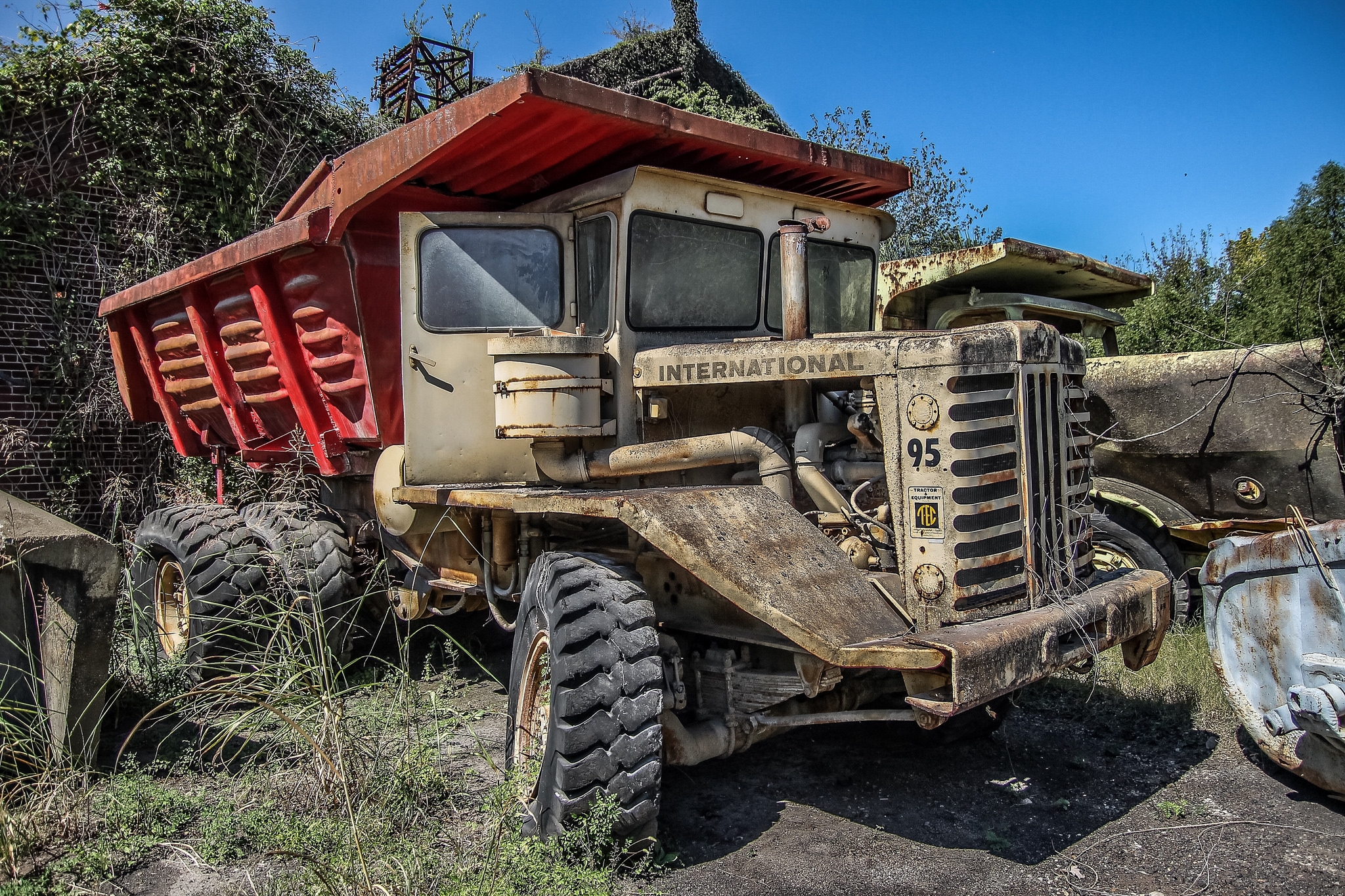
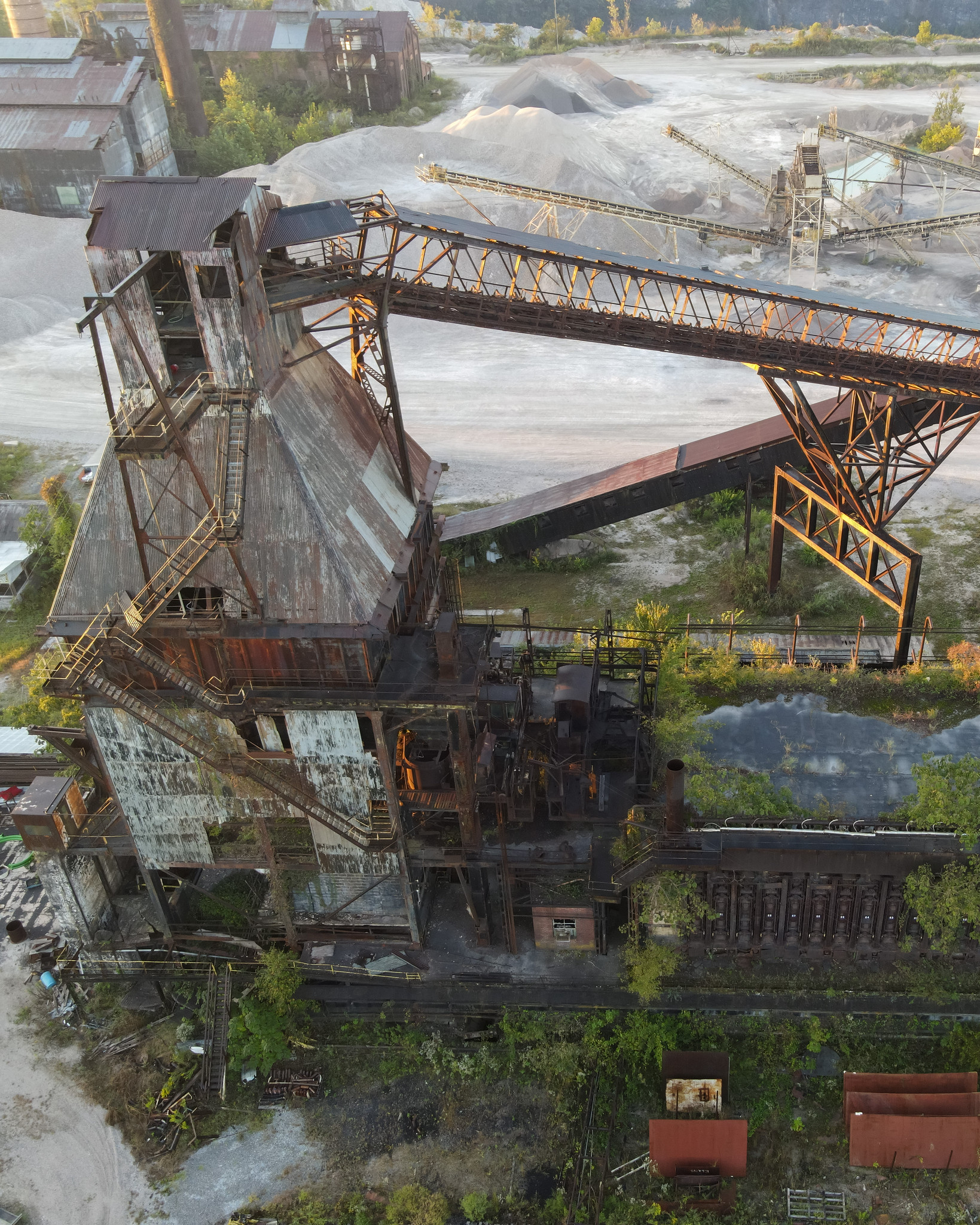

Thank you for reading. I appreciate the support. Please share the blog with your friends.
You can find me on Facebook, Instagram, Twitter, and TikTok. For more abandoned places from across Alabama, check out my photography books, Abandoned Birmingham and Abandoned Alabama: Exploring the Heart of Dixie.


What a place! Enor
LikeLike
Enormous dead structures
LikeLiked by 1 person
Really great pictures and writing!
LikeLiked by 1 person
Thank you
LikeLike
I’m surprised this stuff survived the years when scrap metal was worth money! Great pics
LikeLiked by 1 person
BIG BUILDINGS like this? SOMETIMES used as STORAGE…RUGGED. AND HIGH ceilings….
LikeLike
The once proud and might laid to rest by cheap imported Japan 🇯🇵 Steel… Talk about unfair world trade…👎🏿👎🏿
LikeLiked by 1 person
Yes Ron you are absolutely correct my Uncle Warren Taylor was a supervisor at the Bethlehem steel plant in Buffalo NY. He told my Aunt the Japanese were visiting the plant. Well she told him they would take his job, they copied the process and produced it cheaper and poorer quality and the Lackawanna plant and all the jobs are gone. If we went to war today where would we get the steel to build the weapons? Maybe we need to have lower wages and more jobs.
LikeLiked by 1 person
There was one common factor that all of the defunct iron and steel mills shared that also played a part in their demise. ACIPCO founded in 1905 didn’t share that factor is still going strong. Sometimes we are our own worst enemy..
LikeLike
awesome captures! is this location close to downtown Birmingham?
LikeLiked by 1 person
Yes.
LikeLike
Thanks for sharing the awesome pictures and history. Can’t believe I didn’t know this was still around. Did you receive special permission to visit? If I show up on a Sunday to explore will I be asked to leave?
LikeLiked by 1 person
I had permission from the owner to photograph the mill. There’s security now so if you go without permission they may ask you to leave.
LikeLike
Great pictures. Very cool. My grandfather worked here and lived in Thomas.
LikeLiked by 1 person
Republic Steel/Gulf States Steel in in Gadsden/Alabama City and sits on Black Creek.
LikeLike
I grew up swinging from the walk threw bars out front of the Gadsden Republic Steel waiting on my daddy to get off work when I was growing up,I couldn’t believe it when they shut them furnace’s down, it just doesn’t seem to be the same there but the smell gone is nice concisering I bought a house there in Walnut park.
LikeLiked by 1 person
As a little kid, my brothers and I, lived across the train tracks from the quarry end of the property. The nearby warehouses were, surprisingly, built upon limestone karst topography that was riddled with sink holes. In the small wooded area, south of the bend in the railway, was the old Roberts Air Field. They used the runways to stage the cement manufacture during the construction of I-59. I imagine much of the hanger and its’ contents are still in those woods.
LikeLiked by 1 person
I worked at the coke plant from 1980 till 1986 lots of good men make their living at this company. Just did not keep up with the times and Japanese steel killed our jobs.
LikeLiked by 2 people
Thank you for contributing.
LikeLike
Good day~
This may sound like a very odd request, but believe me it is sincere. For many, many years now I have researched, written about and also collected date nails. These are/were regular nails of various lengths made from steel, copper, aluminum or iron with one or two digits on the head of the nail.
Originally used by railroads to keep records of when ties were placed into service, utilities now also use them in poles for the same purpose.
I am always trying to uncover new material about these nails for articles I write and that is the purpose of this email. I am hoping that you might have some historical correspondence, purchase orders, specifications or that type of material regarding the history of these nails being manufactured and sold by Republic Steel Corp.
In the past I have been fortunate to uncover some unique history of these nails from very unlikely sources, (ie. The National Park Service Archives & etc.) So it is my hope you might have some references to date nails, dating nails, tie marking nails in your historical files that you might be able to share?
I have written several books on these nails and have put them on line for the many collectors of these items to access and use. As I said, it is an enjoyable hobby I have had for a long time now.
Any relevant articles you may have in your files would be most appreciated and I do look forward to hearing from you.
Regards,
Rolland Meyers
33 Ramona Ave.
Oakland, CA 94611
510 658 5221 <rolland@rollandmeyers.com.
LikeLike
Thank you so much for saving this history. I live in Catasauqua, where David Thomas built the first technically and commercially successful anthracite fueled iron furnace in this country (and maybe the world). Giles Edwards came south from Pennsylvania and brought David Thomas Sayre to Alabama before the civil war, to explore coal resources. James Thomas, son of Hopkin Thomas, (not David’s son) also living in Catasauqua, built the Thomas furnaces, which were the first coke furnaces in Alabama, and it was James for whom the town was named. James came down with his friend William Jones, who later became Andrew Carnegie’s right hand man at the Edgar Thompson Iron works (Pittsburgh). David’s grandson Edwin succeeded him in the Pioneer mines venture. There is additional info on the Catasauqua connection to Alabama in Ethel Armes book, The Story of Coal and Iron in Alabama. For more information on James Thomas and his father Hopkin, go to – TheHopkinThomasProject.com
BTW, Can you tell me who Sayre, Alabama, was named for. Was it Sayre of Sayre mines and Bethlehem Iron or a local Sayre family?
Deb Mellish
Historic Catasauqua Preservation Association
LikeLike